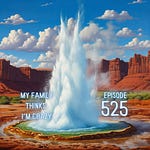Briefing Doc: A Review of Charles Fort's Book of the Damned (Excerpts)
Author: Charles Hoy Fort
Publication Date: (originally published in 1919)
Main Themes:
The Damned Data: This book focuses on the collection and analysis of phenomena deemed "damned" by mainstream science. Fort argues that established knowledge systems, both theological and scientific, maintain their dominance by ignoring or suppressing data that contradicts their accepted theories.
Intermediateness and Continuity: Fort rejects the rigid categories and absolute pronouncements of science, advocating for a more fluid and interconnected view of reality. He emphasizes the "intermediateness" of all things, blurring lines between categories and embracing paradox.
Super-Geography and Other Worlds: Fort proposes a "Super-Geography," a realm beyond the accepted boundaries of terrestrial phenomena. This realm encompasses other worlds, strange objects, and inexplicable events that interact with our own world. He explores concepts like aerial regions, super-constructions, and extraterrestrial visitors.
Hypnosis and Dominants: Fort argues that human thought is largely governed by "Dominants," powerful ideas or systems of belief that act as magnets, attracting and shaping our perceptions. These Dominants, whether spiritual or material, determine what we accept as true and what we reject.
Important Ideas and Facts:
The Book as a Procession of the Damned: Fort introduces his work as a "procession of the damned," a collection of marginalized data points rejected by mainstream science. He argues that these "damned" occurrences offer a glimpse into a reality beyond the limitations of conventional thought.
"All would be heavenly –– If the damned would only stay damned."
Criticism of Scientific Exclusionism: Fort critiques the scientific method for its tendency to exclude or explain away anomalous data. He argues that scientific "virgins" are often more concerned with maintaining the purity of their system than with honestly investigating the unknown.
"We see, to start with, that the virgins of science have fought and wept and screamed against external relations –– upon two grounds:..."
Examples of "Damned Data": Fort presents a vast array of seemingly inexplicable phenomena, including falls of strange substances from the sky (butter, flesh, slag, coal, sand, etc.), unusual atmospheric events, and the appearance of unidentified objects. He uses these examples to challenge the completeness and accuracy of established scientific explanations.
“Its seeming approximation to consistency, stability, system −− positiveness or realness −− is sustained by damning the irreconcilable or the unassimilable −−”
The Super-Sargasso Sea: Fort theorizes about the existence of a "Super-Sargasso Sea," a vast, stagnant region in the upper atmosphere. This aerial ocean is populated with strange creatures, debris, and even landmasses, and he attributes various falls of organic and inorganic materials to this concept.
"… vast drops of water afloat in what is called space −− fishes and deluges of water falling −−"
Possible Explanations for Anomalous Data: Fort speculates on potential causes for the phenomena he presents, ranging from unknown atmospheric forces and interactions with other worlds to advanced technologies and the intervention of non-human entities. He leaves room for multiple interpretations, encouraging readers to engage with the data and form their own conclusions.
"We accept that Venus, for instance, has often been visited by other worlds, or by super−constructions, from which come cinders and coke and coal; that sometimes these things have reflected light and have been seen from this earth −− by professional astronomers."
Hypnosis and Dominants: Fort argues that our understanding of the world is shaped by dominant cultural and intellectual paradigms. These "Dominants" act as hypnotic forces, leading us to accept certain explanations and reject others, regardless of the evidence.
"Or my own acceptance that we do not really think at all; that we correlate around super−magnets that I call Dominants −− a Spiritual Dominant in one age, and responsively to it up springs monasteries, and the stake and the cross are its symbols: a Materialist Dominant, and up spring laboratories, and microscopes and telescopes and crucibles are its ikons −− that we're nothing but iron filings relatively to a succession of magnets that displace preceding magnets."
Importance of the Work:
Challenge to Scientific Dogma: The Book of the Damned serves as a powerful critique of scientific dogmatism and the limitations of knowledge systems that rely on exclusion and dismissal.
Early Forerunner of Forteanism: This book is considered foundational to Forteanism, a field of study focused on investigating anomalous phenomena and challenging conventional explanations.
Invitation to Open-Minded Inquiry: Fort's work encourages readers to question accepted truths, embrace the unknown, and explore alternative possibilities in understanding the complexities of reality.
Quotes of Note:
"If I can't see universally, I only localize."
"All would be well. All would be heavenly –– If the damned would only stay damned."
"Do you want power over something? Be more nearly real than it."
"Of course not, we Intermediates say: but, also, that, in Intermediateness, neither is there absolute non−existence."
"Or a Christian Scientist and a toothache −− neither exists in the final sense: also neither is absolutely non−existent, and, according to our therapeutics, the one that more highly approximates to realness will win."
"Or oneness of allness: scientific works and social registers: a Goldstein who can't get in as Goldstein, gets in as Jackson."
Conclusion:
Charles Fort's Book of the Damned presents a compelling and thought-provoking challenge to the limitations of scientific dogma and the boundaries of accepted knowledge. By presenting a vast collection of "damned data" and exploring alternative explanations, Fort encourages readers to question their assumptions and embrace a more nuanced and inclusive understanding of the universe and our place within it.














Share this post